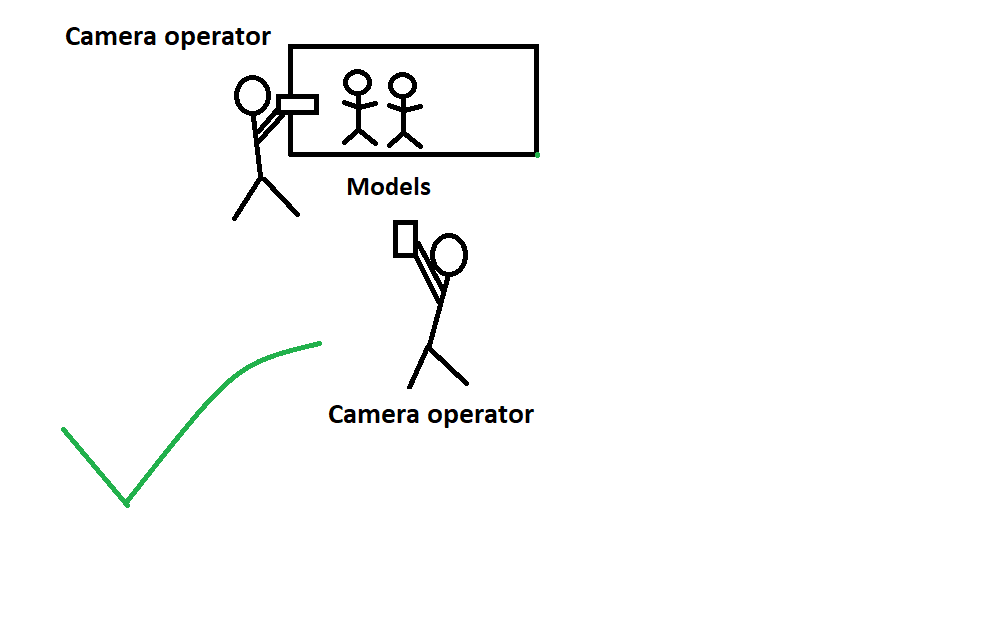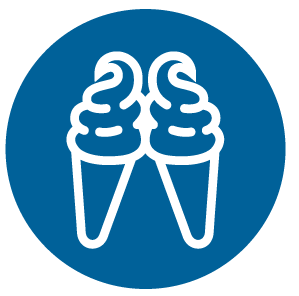Customers want to feel they are in the room with the models, so close they could reach out and touch them. To achieve this feeling, we position cameras close to the action, zoomed out wide. This emulates the peripheral vision a person has when they are close to another person (more detials about the no-zoom principle in the GGT3 Always keep viewers close to the action SDLP, 11 minutes).
To be clear, the alternate approach (being further away from models, and zooming in) is never appropriate for abbywinters.com shoots.
These principles apply to all Shoot Types at abbywinters.com.
Achieving correct framing
Camera set up
At the start of the shoot, when cameras are set up, SPs ensure cameras are set to the shortest lens lenth (widest angle) possible. This is the zoom position the lenses will stay for the entire shoot day. For Solo shoots this is managed by the SP.
IM shoots are captured using a single frame from a tripod. SPs ensure the camera is set to the widest possible frame during the set up, moving the tripod and camera closer to models to achieve the desired framing.
On multiple camera shoots (GG, GB), SPs talk to SCOs to ensure that they understand that under no circumstances are they to alter the lens length during the media capture process.
Positioning camera operators
When camera operators are standing far away from models it is impossible to place customers close to the action, while maintaining the widest possible frame.
The below examples all reference GGT3 shoots but the same principle applies when framing for Solo shoots or GBT3.
Wrong approach, far and wide
Relevant to Solo, GG or GB
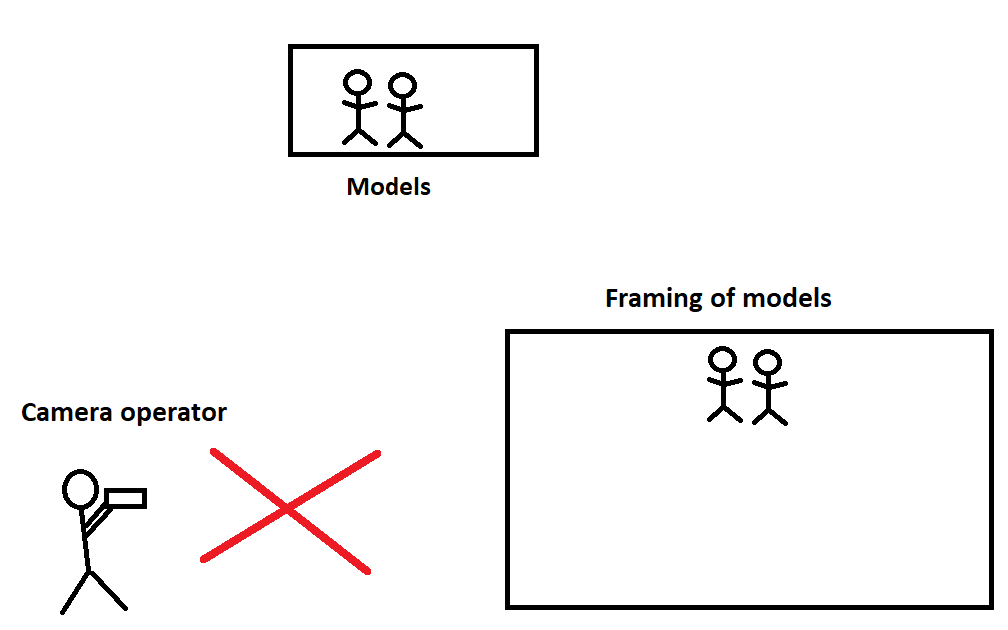
Wrong approach: far and zoomed in
Relevant to Solo, GG or GB
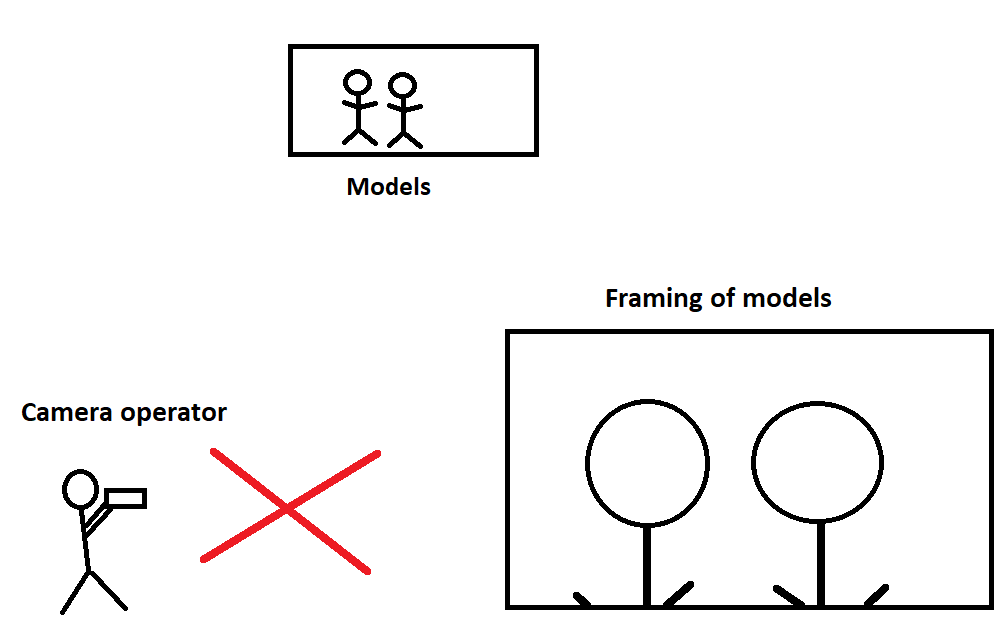
Correct approach: close and wide
Relevant to Solo, GG or GB
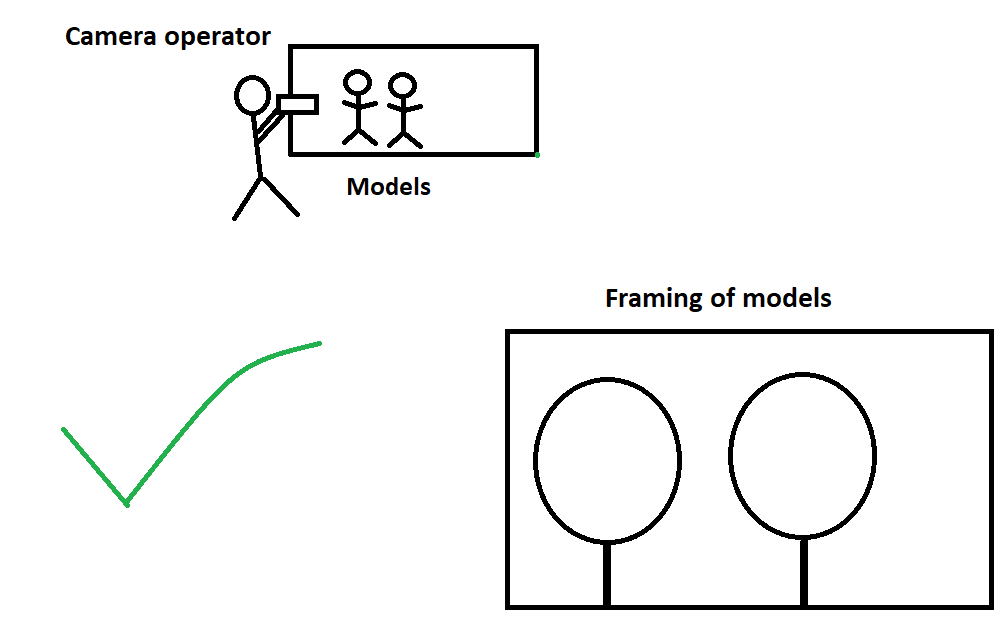
Wrong approach: One close-and-wide, one far-and-zoomed-in
Relevant to GG or GB.
During GG or GB shoots, the SP can only clearly see the content they are recording on their own camera, but they can monitor how far away from the models the Second Camera Operator is from the action. The SP can extrapolate what the SCO is recording, and assess if it will serve customer needs.
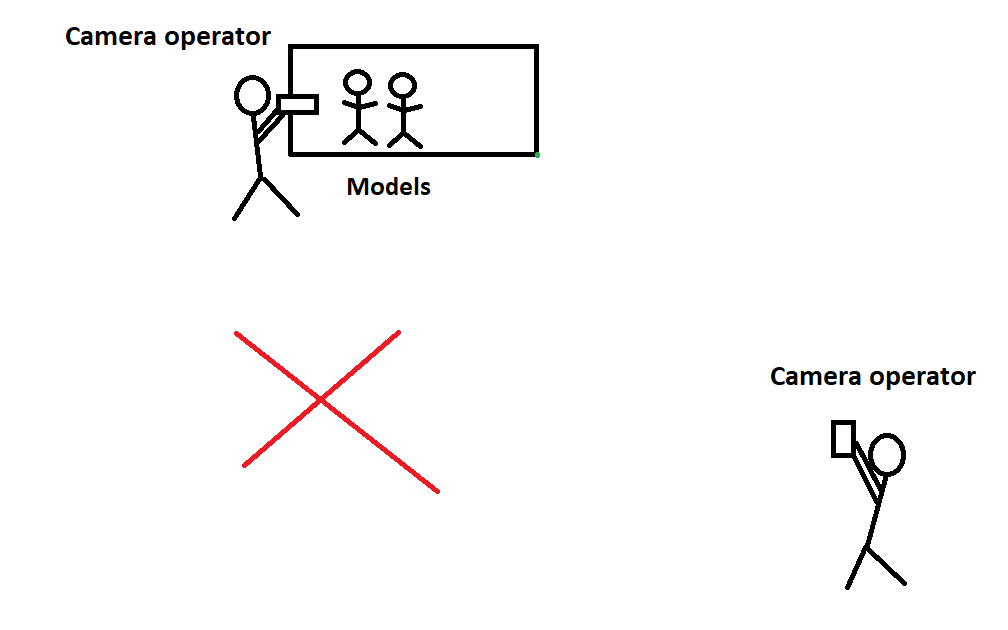
Correct approach: Both SP and SCO are close-and-wide
Relevant to GG or GB
